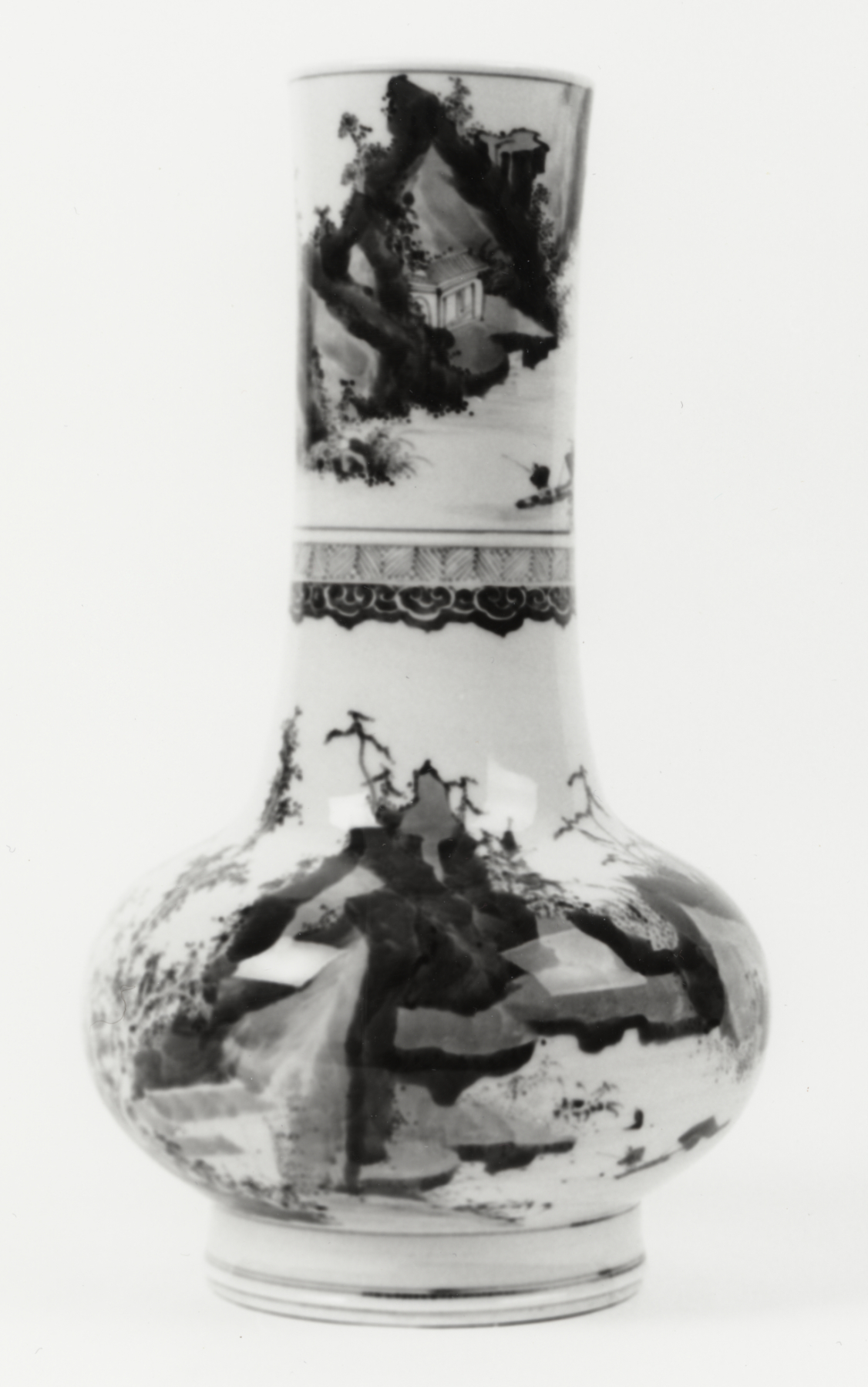Bottle Vase
(China )
A mountainous landscape is painted in underglaze cobalt blue on the squat globular body and tall cylindrical neck of the vase. Nestled in the rockery beside a river bank, on which figures are depicted fishing from their boats, are homes. Greenery abounds on the craggy rocks of the mountainside. Dividing the two scenes mid-height on the neck is a band of chevron patterns and tre-foil Ruyi heads, named for the curved head of the ruyi scepter that acts as a symbol for monastic authority in Chinese Buddhism.
Landscape scenes became popular subjects on blue and white vessels especially in the Qing dynasty. The year 1683 during the Kangxi reign (1662-1722) marks the return of the Imperial production of porcelain and the reinstitution of the Imperial kilns at Jingdezhen. A revival of imperial blue and white porcelain resulted in superbly crafted porcelains with well combined body, glaze, cobalt pigment, and skillful decoration. Refined blue cobalt allowed for adventurous and varied painting techniques, emulating watercolor on paper.
Inscription
Provenance
Provenance (from the French provenir, 'to come from/forth') is the chronology of the ownership, custody, or location of a historical object.
William T. or Henry Walters Collection, Baltimore [date and mode of acquisition unknown]; by bequest to Walters Art Museum, 1931.
Geographies
China (Place of Origin)
Measurements
H: 12 11/16 in. (32.3 cm)
Credit Line
Acquired by William T. or Henry Walters
Location in Museum
Not on view
Accession Number
In libraries, galleries, museums, and archives, an accession number is a unique identifier assigned to each object in the collection.
In libraries, galleries, museums, and archives, an accession number is a unique identifier assigned to each object in the collection.
49.1626


